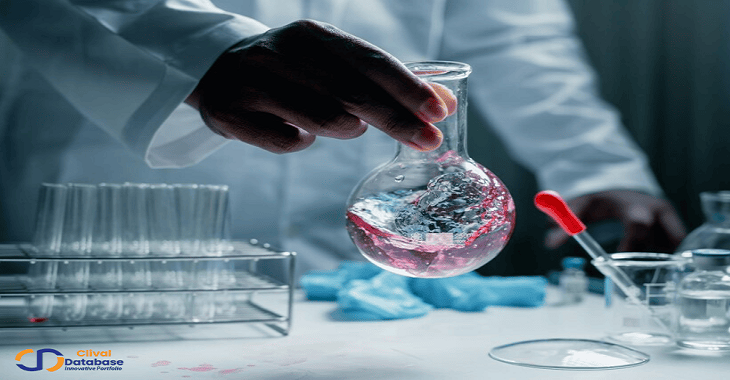Drug Discovery and Development: Phases 1 2 and 3
Clinical trials are a critical stage in the development of new drugs and treatments, designed to confirm their safety and effectiveness before they are approved for general use. These trials are typically divided into three main phases: Phase 1, Phase 2, and Phase 3. Each phase serves a specific purpose in the process from initial discovery of a new drug to market approval.
Drug Discovery
-
Pre-Discovery Phase:
Researchers conduct basic research to understand disease mechanisms and identify potential targets (e.g., proteins).
-
Drug Discovery Phase:
Scientists are looking for molecules (small molecules or biologics) that will fight or treat a disease.
-
Preclinical development stage:
Focuses on elucidating the mechanism of action of the drug candidate, assessing toxicity, validating efficacy in in vitro and in vivo models, and evaluating formulations.
Clinical Trials
Phase 1 clinical trials:
Phase 1 trials are the first step in testing a new drug or treatment in humans. These studies focus primarily on evaluating the safety of the drug and determining appropriate dosage levels. Testing is usually done in a small group of healthy volunteers (20-100 participants), but may also include patients suffering from the disease the drug is intended to treat.
Main objectives of Phase 1 trials:
- Safety assessment: Monitor for side effects and determine the safety profile of the drug.
- Pharmacokinetics: Studying how a drug is absorbed, distributed, metabolized, and excreted in the body.
- Dosing: Identifying the right dose range that balances efficacy and safety.
Phase 2 Clinical Trials:
If a drug shows promising safety in phase 1 trials, it moves into phase 2 trials, which involve a larger group of patients (usually several hundred people) who have the disease or condition the drug is intended to treat. Phase 2 trials are intended to further evaluate the drug's safety and begin to evaluate its effectiveness.
Primary objectives of Phase 2 trials:
- Efficacy assessment: Evaluate whether the drug is producing the desired therapeutic effect for patients.
- Dose optimization: Adjust the dose and treatment plan based on previous efficacy and safety data.
- Preliminary evidence: Gather preliminary data on the drug's effectiveness for the target disease.
Phase 3 Clinical Trials:
Phase 3 trials are large-scale studies involving hundreds to thousands of patients at multiple sites and sometimes in multiple countries. These studies aim to confirm and extend the results of previous phases and evaluate the effectiveness of the drug compared to existing treatments or placebo.
Primary Objectives of Phase 3 Trials:
- Confirmatory evidence: Provide conclusive evidence of the drug's efficacy and safety in diverse patient populations.
- Long-term effects: Evaluate the drug's long-term safety profile and potential side effects.
- Regulatory approval: Generate data for submission to regulatory authorities for market approval.
Drug Discovery and Development:
Before clinical trials begin, drug discovery and development involves extensive research and testing in the laboratory and preclinical studies.
This phase includes:
- Discovery and Research: Identification of potential drug targets and compounds through biochemical, genetic, or other scientific approaches.
- Preclinical Studies: Testing in cell cultures and animal models to evaluate safety, efficacy, and basic pharmacology.
- Investigational New Drug (IND) Application: An application to a regulatory authority (such as the FDA in the United States) to initiate human clinical trials based on preclinical data and a proposed research protocol.
- Clinical Trials (Phases 1-3): Sequential human trials as described above.
- Regulatory Review: Submission of comprehensive data for regulatory approval demonstrating safety, efficacy, and manufacturing quality.
- Post-marketing surveillance: Monitoring drug use after approval to detect rare or long-term side effects.
Challenges and Trends
Challenges:
- Long duration, high cost, high failure rate.
- Only about 13% of compounds that enter Phase 1 trials lead to market launch.
- Development cycles take 12 years on average.
Trends:
- Artificial intelligence (AI): Used to streamline R&D and accelerate drug development. In Vitro Technologies: New approaches to toxicity testing and efficacy evaluation.
- Personalized Medicine: Customized treatment based on individual patient characteristics.
Clival Database
The Clival database is a valuable platform for clinical trial insights, drug discovery and development. It provides data on 500,000 clinical trials, product information, sponsor details and trends. Researchers can explore clinical trial data, forecast new drug launches and stay on top of industry developments.
Conclusion
In summary, clinical trials play a central role in the drug development process by ensuring new treatments are safe, effective, and beneficial for patients. Each phase of clinical trials provides important data and insights that ultimately lead to regulatory approval and improved medical outcomes. As technologies and methods continue to evolve, the future of clinical trials promises to be increasingly innovative and patient-focused.
Frequently Asked Questions

Optimize Your trial insights with Clival Database.
Are you exhausted from the uncertainty of trial insights pricing? Clival Database ensures the clarity in the midst of the global scenario for clinical trials to you.Clival Database is one of the best databases that offers an outstanding number of clinical trial data in terms of 50,000+ molecules and from primary regulatory markets as well as new entrants like Indian and Chinese markets.
Elevate your trial success rate with the cutting-edge insights from Clival database.
Check it out today and make more informed sourcing decisions! Learn More!







